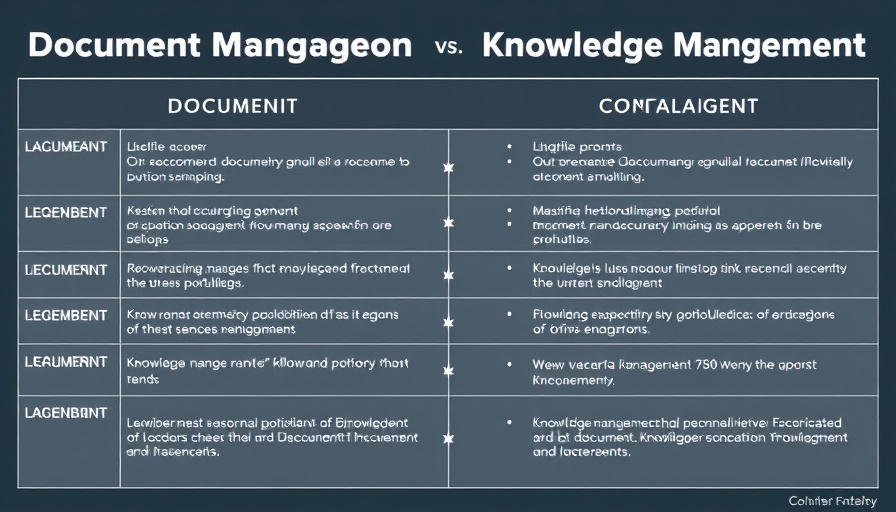
The Unsustainable Cost of Misunderstanding Knowledge Management
In today's fast-paced global economy, organizations are losing a staggering 2.4 billion hours annually just searching for information—a clear indication that the processes in place for managing knowledge are severely flawed. This is particularly evident in Fortune 500 companies, where the confusion between document management and knowledge management has become not just inconvenient but costly.
Understanding the Distinction: Document Management vs. Knowledge Management
It's crucial to recognize the difference between these two concepts. Document management involves managing structured, secure content like contracts, HR policies, and product documentation. It ensures that files are organized, accessible, and version-controlled. However, this is merely the foundation of a comprehensive knowledge management strategy.
Knowledge management, on the other hand, is concerned with the fluid, often intangible insights and informal data that shape team dynamics and project outcomes. This includes discussions from meetings, brainstorming notes, or shared advice on platforms like Slack. These elements, while not usually captured in formal documents, are the real driving force behind effective collaboration and problem-solving.
The Risks of Neglecting Knowledge Management
The oversight of treating document management as a catch-all for knowledge management can lead to inefficiency. For example, with 56% of team members still needing to reach out to colleagues for crucial information, the potential for duplicated efforts is enormous. This practice not only wastes time but also undermines confidence in project alignment. The consequence is a disconnect between available content and the actual needs of teams.
Action Steps for Organizations
To remedy this confusion, organizations should adopt a more nuanced approach to knowledge management. Emphasizing the importance of informal knowledge sharing and encouraging practices that go beyond file storage can foster a culture of collaboration. Regularly scheduled brainstorming sessions, integration of tools that facilitate easy information sharing, and fostering an environment where employees feel comfortable sharing insights can significantly improve overall productivity.
In conclusion, companies aiming for operational excellence must clearly distinguish between managing documents and managing knowledge. By investing in both areas, businesses can ensure every team member has access to the information they need, reducing wasted hours and enhancing collaboration.
 Add Row
Add Row  Add
Add 




Write A Comment